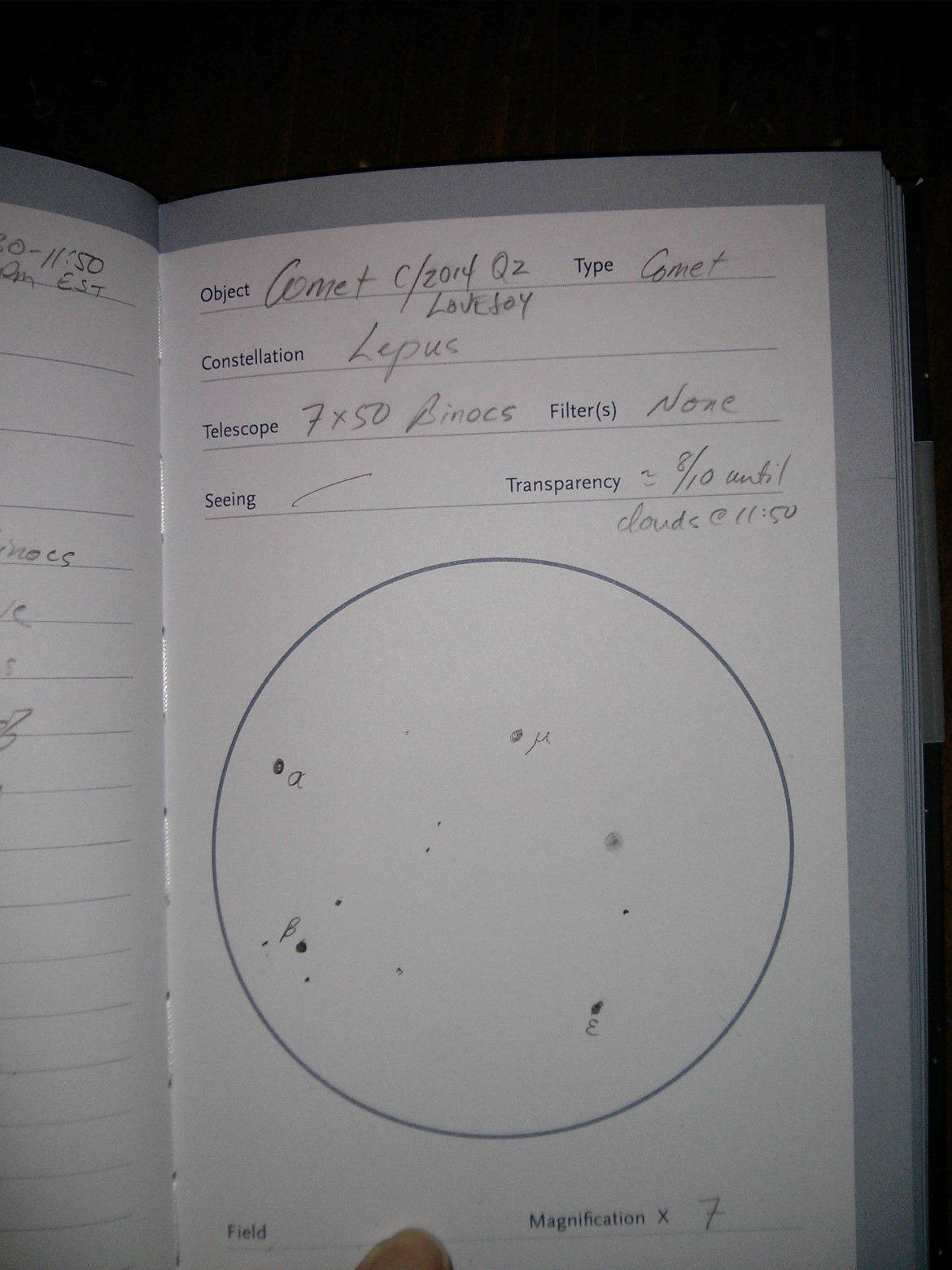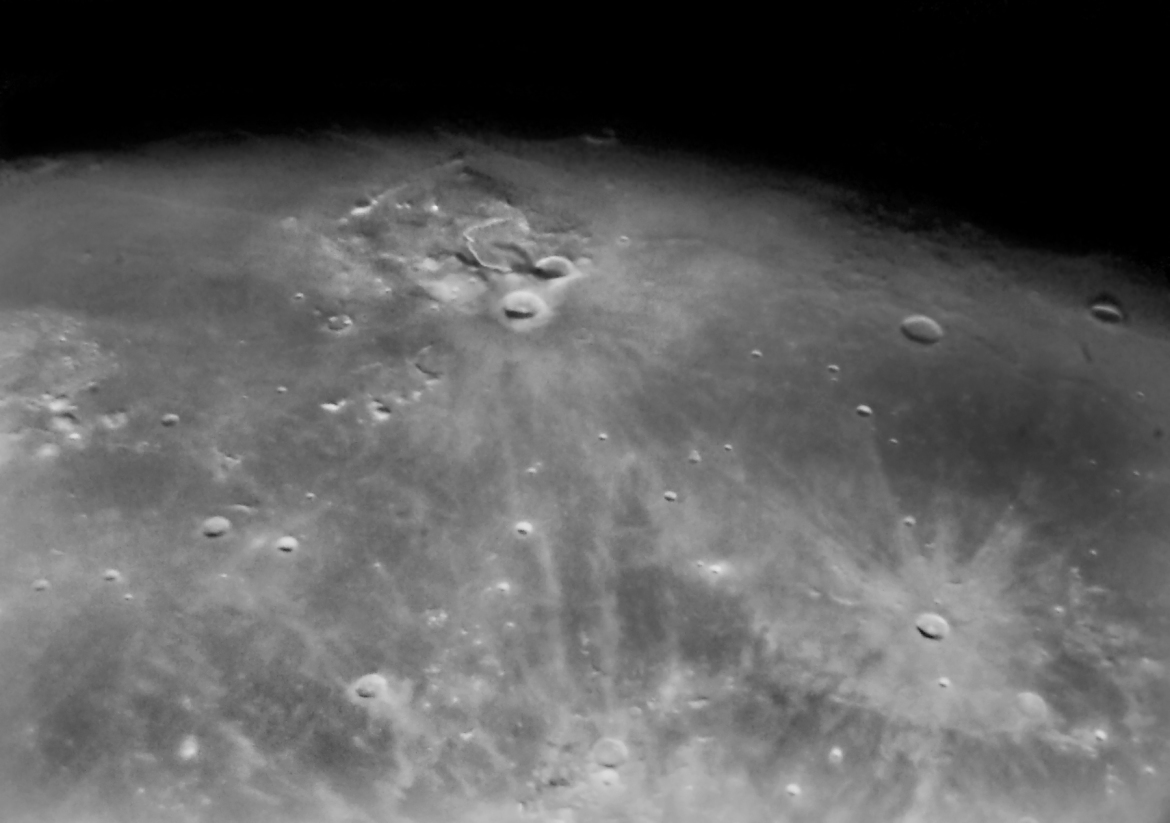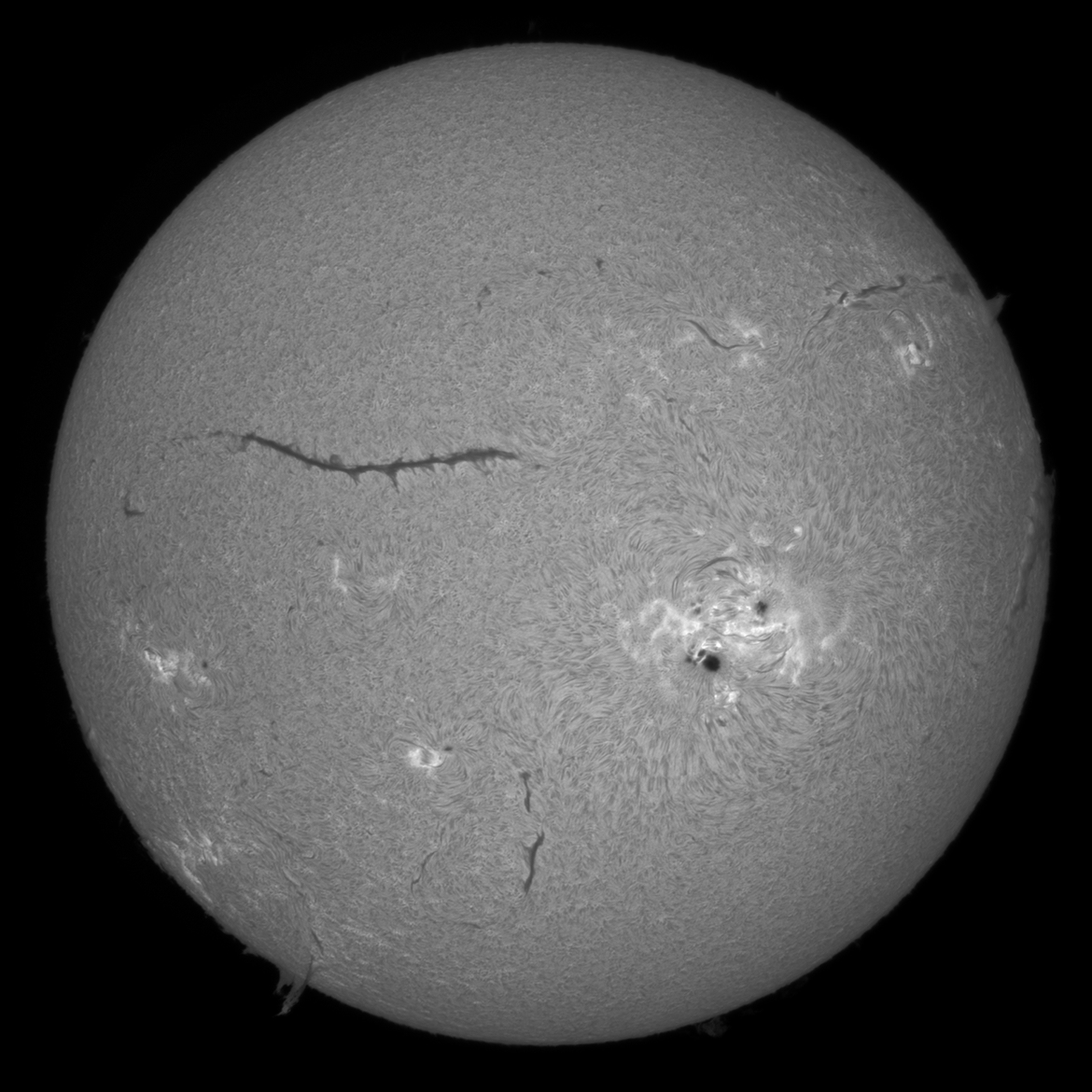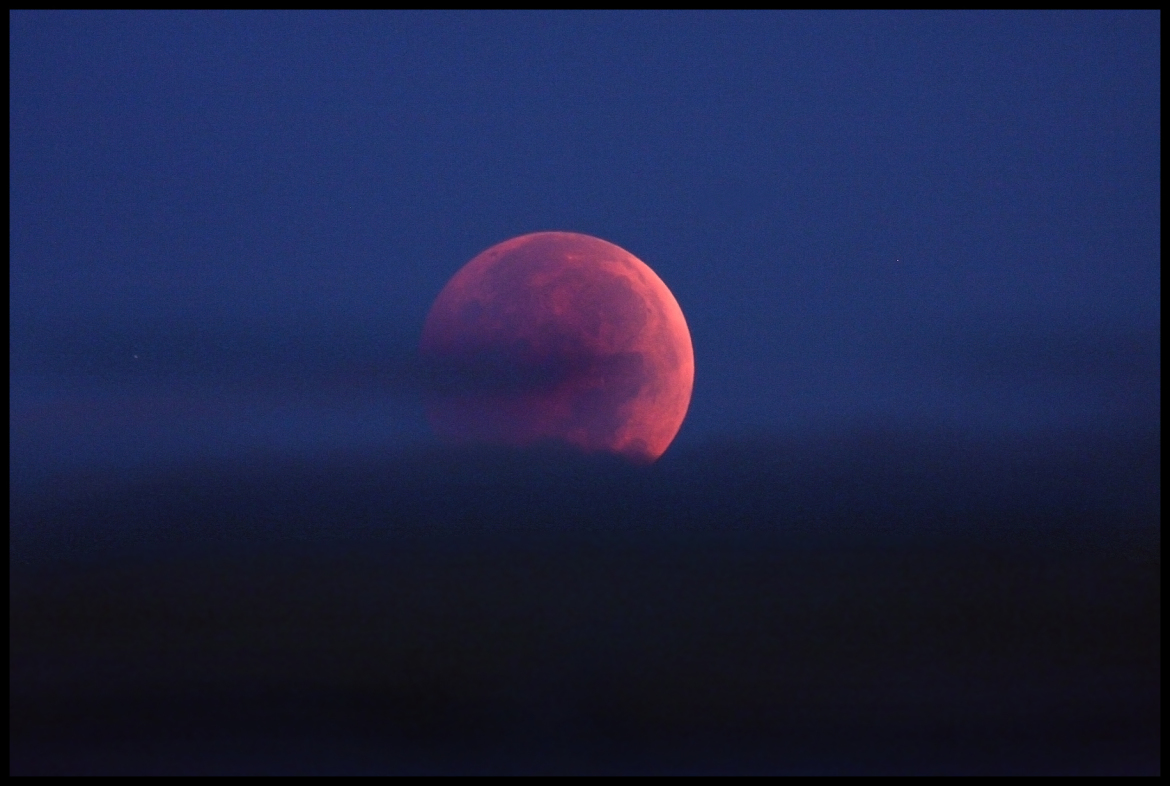Observing
Last night finally gave some decent skies, so I ventured out into my backyard on the West Mountain to take a peek at Comet Lovejoy(even though it was -15°). The comet is now visible to the naked eye even from moderately light polluted skies, and I imagine from a dark sky site it would look fantastic. The comet is moving higher and higher into the sky, and already has dropped below magnitude +5. Through my 10″ Dobsonian, the comet was certainly a treat. The coma is quite large and fades nicely into the background sky, while the nucleus is small, stellar and bright. A hint of a tail can even be seen running east from the nucleus (although it could just be averted imagination – more observations are needed to be sure). The picture below is an inverted sketch I made of Lovejoy last night – mainly from memory and a very rough initial sketch as I wasn’t willing to sit at the eyepiece for 45 minutes drawing at that temperature. I encourage anyone who can to go outside and take a peek at the comet through their scopes and binos, and at very least try and find it with the naked eye – here is a link to Sky and Telescope giving locations and descriptions!
Continue Reading
Last observation of 2014: Comet Lovejoy in Lepus. Comet appeared as a circular smudge in 7×50 binocs. No tail was visible. Comet is dimmer than magnitude 4.9
Happy New Year!
Not wanting to pass up a rare clear night, and despite the cold temperatures, I got out with my telescope and began with a below average view of the Orion nebula, due to light pollution from both the city and moon. I then went on to a spectacular view of Jupiter. The bands were detailed and the moons looked like little disks at 180x in my scope. Jupiter is always fascinating through a telescope, with the parade of constantly changing moons and the cloud bands swirling though new patterns all the time. I am looking forward to the upcoming months when Jupiter will be better placed and visible every night. Finally, I turned to the moon, as it was unavoidable on a night like tonight.
Continue Reading
Well, it’s been almost two months since I took a picture of the Moon, and you’re probably saying to yourself, “Gee, I wonder if John is feeling all right.” Not wanting you to think that there’s something wrong with me, here is a shot of the moon that I took tonight. Yup, John’s a geek and all is right in his world. Now, go outside and look at how beautiful the moon is.
Bill imaged the Sun again today, just before an X3.1 flare was released. Sunspot Region 2192 appears to be be forming a new sunspot group. Check it out…
The largest sunspot region on the sun has now been dubbed the largest sunspot region of the current solar cycle. Here is a closeup view of the area from today (Wednesday, Oct. 22). Image was created by Bill Tekatch with a stack of frames from video shot with a monochrome Grasshopper 3 camera through a double stacked Lunt solar telescope.
This region should add considerable interest to images taken of tomorrow’s partial solar eclipse.
Today, Bill imaged the new, active, sunspot region which is just coming into view on the sun. This region was responsible for an X1.1 solar flare on Saturday, October 18. It will be interesting to watch for possible further developments as this sunspot region rotates into view.
Unbelievably, the rain stopped, the sky cleared, and when I arose at 4am this morning (which was also fairly unbelievable), the moon was bright and full and headed towards the Earth’s shadow and a total eclipse.
I observed with Jim and we had some beautiful views of the eclipsed moon in the brightening sky as dawn came. The moon was red and dark this time, but part of that could have been due to it being so low in the sky.
Here are a few pics that I took. I hope you got out and enjoyed the eclipse this morning, and if you missed it, there will be another next year.
Using the same set-up that I used for the moon photo below, along with a Baader white light solar filter, I got this picture of the sun. I actually tried the day before, but had no success. Perseverance paid off though, and I am pleased with this result. Again, this is a 90mm refractor with a barlow.
Having my scope set up on my front lawn doesn’t usually attract much attention (by back yard has too many trees to see much of the sky) but setting up in the middle of the afternoon meant that lots of people stopped by to see what I was doing. So along with a couple of nice pictures, I did a bit of ‘sidewalk astronomy’ as well, and that’s always a good thing.
Remember, never look at the sun without proper solar filters and the knowledge to use them correctly.
This month’s full moon is tonight and I am hoping to get out and see its rising. In preparation (and because I just couldn’t wait until tonight!), I went out last night to view and photograph the nearly full moon.
This image was taken with my 90mm refractor and a barlow to increase the image scale. I then converted the image to black and white and increased the contrast a bit. I hope to get an image of the full moon rising tonight.
The moon rises around 7:20 tonight, just barely south of due east, and I heartily encourage you to get out and see the moon and enjoy one of the loveliest naked eye sights in the sky.










